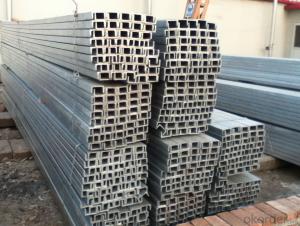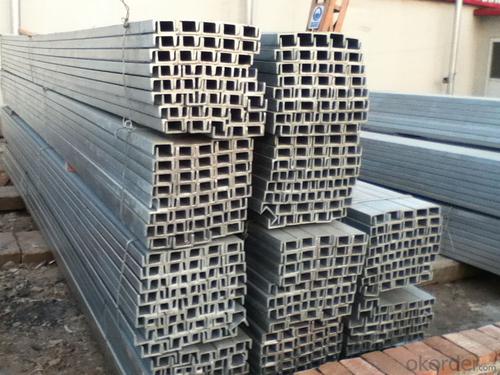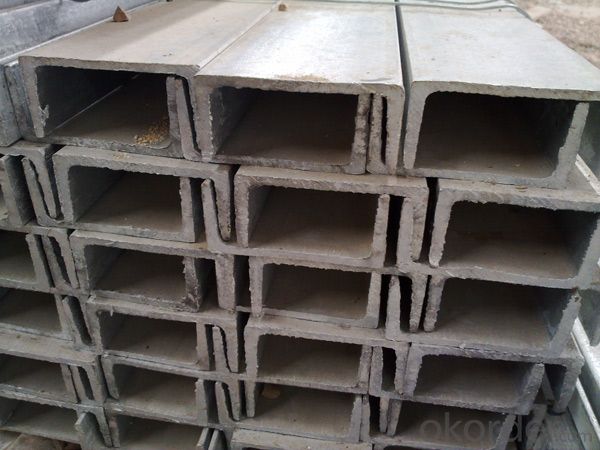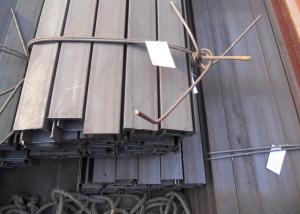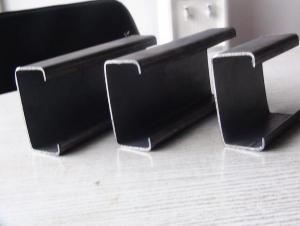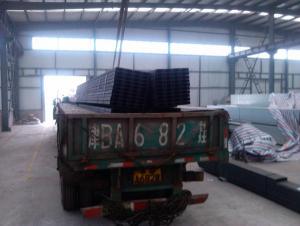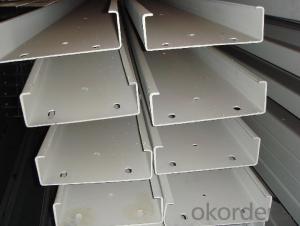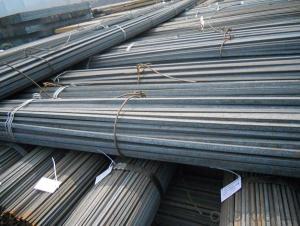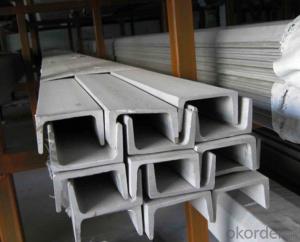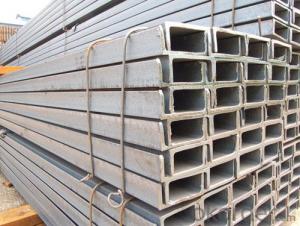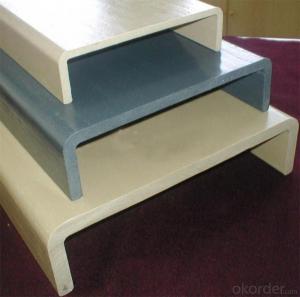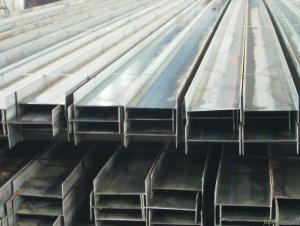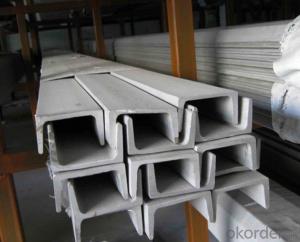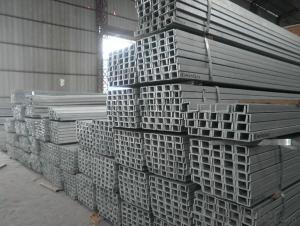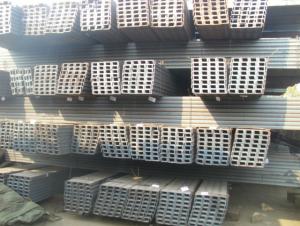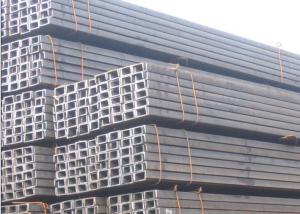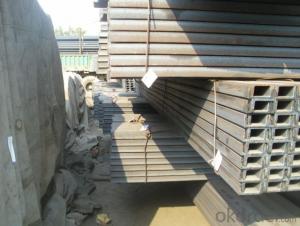UPN JIS U CHANNEL GB U CHANNEL 50MM-300MM
- Loading Port:
- Tianjin
- Payment Terms:
- TT OR LC
- Min Order Qty:
- 25 m.t.
- Supply Capability:
- 20000 m.t./month
OKorder Service Pledge
OKorder Financial Service
You Might Also Like
Product Description:
OKorder is offering UPN JIS U CHANNEL GB U CHANNEL 50MM-300MM at great prices with worldwide shipping. Our supplier is a world-class manufacturer of steel, with our products utilized the world over. OKorder annually supplies products to European, North American and Asian markets. We provide quotations within 24 hours of receiving an inquiry and guarantee competitive prices.
Product Applications:
According to the needs of different structures,UPN JIS U CHANNEL GB U CHANNEL 50MM-300MM can compose to different force support component, and also can be the connections between components. It is widely used in various building structures and engineering structures such as roof beams, bridges, transmission towers, hoisting machinery and transport machinery, ships, industrial furnaces, reaction tower, container frame and warehouse etc
Product Advantages:
OKorder's UPN JIS U CHANNEL GB U CHANNEL 50MM-300MM are durable, strong, and resist corrosion.
Main Product Features:
· Premium quality
· Prompt delivery & seaworthy packing (30 days after receiving deposit)
· Corrosion resistance
· Can be recycled and reused
· Mill test certification
· Professional Service
· Competitive pricing
Product Specifications:
Manufacture: Hot rolled
Grade: Q195 – 235
Certificates: ISO, SGS, BV, CIQ
Length: 6m – 12m, as per customer request
Packaging: Export packing, nude packing, bundled
Sizes: 25mm-250mm | ||||||||||||
a*t | ||||||||||||
25*2.5-4.0 | 70*6.0-9.0 | 130*9.0-15 | ||||||||||
30*2.5-6.6 | 75*6.0-9.0 | 140*10-14 | ||||||||||
36*3.0-5.0 | 80*5.0-10 | 150*10-20 | ||||||||||
38*2.3-6.0 | 90*7.0-10 | 160*10-16 | ||||||||||
40*3.0-5.0 | 100*6.0-12 | 175*12-15 | ||||||||||
45*4.0-6.0 | 110*8.0-10 | 180*12-18 | ||||||||||
50*4.0-6.0 | 120*6.0-15 | 200*14-25 | ||||||||||
FAQ:
Q1: Why buy Materials & Equipment from OKorder.com?
A1: All products offered byOKorder.com are carefully selected from China's most reliable manufacturing enterprises. Through its ISO certifications, OKorder.com adheres to the highest standards and a commitment to supply chain safety and customer satisfaction.
Q2: How do we guarantee the quality of our products?
A2: We have established an advanced quality management system which conducts strict quality tests at every step, from raw materials to the final product. At the same time, we provide extensive follow-up service assurances as required.
Q3: Can stainless steel rust?
A3: Stainless does not "rust" as you think of regular steel rusting with a red oxide on the surface that flakes off. If you see red rust it is probably due to some iron particles that have contaminated the surface of the stainless steel and it is these iron particles that are rusting. Look at the source of the rusting and see if you can remove it from the surface.
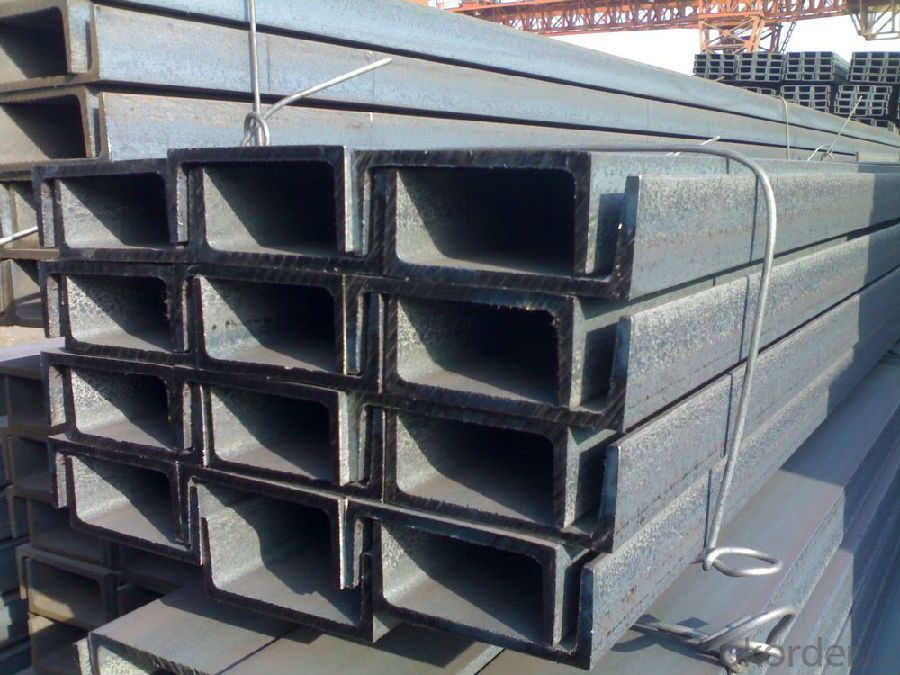

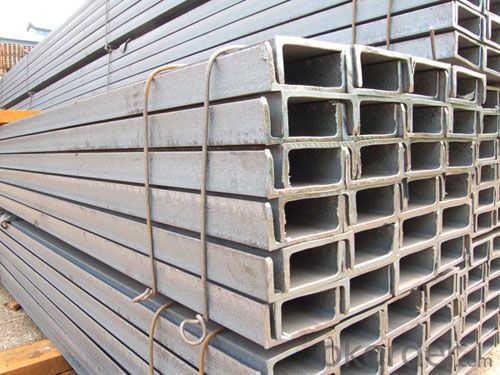
- Q: Can steel channels be welded together?
- Certainly, it is feasible to weld steel channels together. Welding serves as a prevalent technique in order to unite steel channels, thus establishing a robust and long-lasting connection. The process entails heating the steel channels until they reach their melting point and subsequently utilizing a filler material to amalgamate them. Depending on the specific necessities and the nature of the steel channels being united, welding can be executed through diverse techniques such as arc welding, MIG welding, or TIG welding. Nevertheless, it is imperative to guarantee the adherence to proper welding procedures and techniques to attain a weld of exceptional quality that meets the desired standards of strength and integrity.
- Q: How do steel channels contribute to the overall sustainability of a building?
- There are several ways in which steel channels contribute to the overall sustainability of a building. Firstly, due to its durability and long lifespan, steel is a material that can withstand the test of time. This means that when steel channels are used in construction, there is less need for frequent repairs or replacements. As a result, the consumption of resources is minimized and waste is reduced. Moreover, steel channels have a high strength-to-weight ratio, making them a lightweight yet sturdy option for structural components. This characteristic allows for more efficient construction practices, as less material is needed to achieve the same strength and load-bearing capacity. Consequently, the use of steel channels can reduce the overall weight of the building, resulting in lower energy consumption during transportation and construction. Another aspect of steel channels that contributes to sustainability is their recyclability. Steel is one of the most recycled materials globally, with a high recycling rate. When a building reaches the end of its lifespan, steel channels can be easily dismantled and recycled instead of ending up in landfills. This recycling process saves energy and natural resources that would be required to produce new steel, while also reducing greenhouse gas emissions associated with the production of virgin steel. Additionally, the use of steel channels in construction allows for flexibility in design and adaptability in the future. Steel structures can be easily modified or expanded, making them adaptable to changing needs without the need for significant demolition or reconstruction. This adaptability reduces waste generated during renovations and minimizes the environmental impact of the building throughout its lifecycle. Lastly, steel channels offer excellent fire resistance properties, enhancing the safety and resilience of a building. Steel does not burn, melt, or contribute to the spread of flames, making it a suitable material for fire-resistant construction. By incorporating steel channels in the structure, the risk of fire-related damages is reduced, leading to increased safety and reduced environmental impact. In summary, steel channels contribute to the overall sustainability of a building through their durability, lightweight nature, recyclability, adaptability, and fire-resistant properties. These characteristics result in the efficient use of resources, lower energy consumption, reduced waste generation, and enhanced safety. By incorporating steel channels in construction, not only is the longevity of the building ensured, but its environmental footprint is also minimized.
- Q: Is the track steel often called channel or construction steel?
- See what you do, oh. Anyway, with the "beam" on the general use of I-beamChannel steel is usually made of steel structures and is matched with other types of steel
- Q: Do steel channels have any specific thermal conductivity properties?
- Yes, steel channels have specific thermal conductivity properties. Steel is known to have a relatively high thermal conductivity compared to other materials, meaning it can transfer heat more easily. This property makes steel channels effective in dissipating heat and maintaining temperature stability in various applications such as HVAC systems, heat exchangers, and electrical enclosures.
- Q: How do steel channels contribute to the overall stability of a bridge?
- Steel channels, which are often used in the construction of bridges, play a crucial role in ensuring the overall stability and structural integrity of the bridge. These channels, also known as structural steel sections, provide several key contributions to the bridge's stability. First and foremost, steel channels help distribute the load and weight of the bridge evenly across its span. By acting as horizontal beams, they effectively transfer the loads from the bridge deck to the supporting piers or abutments. This load distribution helps prevent any localized stress concentration, ensuring that the bridge can withstand the forces it encounters, such as the weight of vehicles, wind, or seismic events. Furthermore, steel channels also contribute to the torsional stability of the bridge. Torsional forces can occur due to various factors, including uneven loading, wind gusts, or the bridge's own weight distribution. By incorporating steel channels strategically in the bridge's design, these sections resist torsional forces, preventing any twisting or warping of the structure. This ensures that the bridge remains stable and maintains its intended shape over time. Additionally, steel channels enhance the overall stiffness and rigidity of the bridge. By connecting various structural elements, such as beams and columns, they provide an effective bracing system. This bracing prevents excessive deflection or bending of the bridge under loads, reducing any potential for deformation or failure. The added stiffness and rigidity provided by steel channels also help minimize the bridge's vibrations, ensuring a smoother and more comfortable experience for users. Moreover, steel channels offer versatility in their design and installation. They can be fabricated into various shapes and sizes, allowing engineers to tailor the bridge's structural components to the specific requirements of the project. This adaptability facilitates the optimization of the bridge's stability, enabling it to withstand different loads and environmental conditions. In conclusion, steel channels play a significant role in contributing to the overall stability of a bridge. They provide load distribution, torsional stability, stiffness, and rigidity, ensuring that the bridge can safely support the intended traffic loads and withstand external forces. Their versatility also allows engineers to create efficient and optimized bridge designs, enhancing the overall structural integrity and longevity of these essential infrastructural elements.
- Q: What are the limitations of using steel channels?
- There are several limitations associated with using steel channels in various applications. Firstly, one of the main limitations is cost. Steel channels can be relatively expensive compared to other materials such as wood or certain types of plastics. This higher cost can make it less feasible for certain projects or industries with strict budget constraints. Secondly, steel channels are generally quite heavy and bulky, which can make transportation and installation more challenging. The weight of steel can require additional labor and equipment, increasing overall project costs and potentially limiting its use in certain applications where weight is a critical factor. Another limitation is corrosion. Steel is prone to rusting and corrosion over time, especially in environments with high moisture or exposure to certain chemicals. This corrosion can weaken the structural integrity of the steel channel and may require regular maintenance or protective coatings to prevent or slow down the corrosion process. Additionally, steel channels have limitations in terms of design flexibility. Unlike other materials such as wood or plastic, steel channels are not easily shaped or molded into complex or intricate designs. This lack of design flexibility can limit their use in certain architectural or decorative applications where aesthetic considerations are important. Lastly, steel channels can conduct heat and electricity, which may not be desirable in certain applications. For example, in electrical systems or sensitive electronic equipment, steel channels may need to be insulated or replaced with non-conductive materials to prevent electrical hazards or interference. Overall, while steel channels are strong and durable, they do come with limitations in terms of cost, weight, corrosion, design flexibility, and electrical conductivity. These limitations need to be carefully considered when deciding on the suitability of steel channels for a particular project or application.
- Q: What are the common applications of steel channels?
- Steel channels are commonly used in various applications such as construction, manufacturing, and infrastructure projects. They are frequently utilized as structural components in building frames, support systems, and for reinforcing concrete structures. Steel channels also find application in the fabrication of machinery, vehicles, and equipment, where their high strength and durability are advantageous. Additionally, they are used in the electrical and telecommunications industries for cable management and support.
- Q: What should I do with a screw or nut or bolt on the ramp?
- On the inclined plane, screws or nuts or bolts should be avoided and solved by changing the design method, because it not only affects the force of the fastener, but also causes difficulties in drilling
- Q: Can steel channels be used for creating support structures for water treatment systems?
- Indeed, support structures for water treatment systems can be constructed using steel channels. These channels are frequently utilized in construction and engineering ventures owing to their robustness, longevity, and capacity to bear substantial burdens. While designing support structures for water treatment systems, it is crucial to take into account the weight and dimensions of the equipment and guarantee that the support structure can endure the load. Steel channels offer a sturdy and dependable option for fabricating support structures that can meet the demands of water treatment systems. Furthermore, steel channels can be conveniently fabricated and tailored to fit the specific requirements of a project, making them a versatile choice for constructing support structures in water treatment systems.
- Q: Can steel channels be used in manufacturing equipment?
- Yes, steel channels can be used in manufacturing equipment. Steel channels, also known as C-channels or U-channels, are popular structural components in various industries due to their strength and versatility. They are commonly used to create frames, supports, and structures for machines and equipment. Steel channels provide stability and rigidity, making them suitable for handling heavy loads and withstanding dynamic forces during the manufacturing process. Additionally, steel channels can be easily welded, bolted, or fastened together, allowing for flexible and efficient construction of equipment. Overall, steel channels are a reliable choice for manufacturing equipment due to their durability, strength, and ease of use.
Send your message to us
UPN JIS U CHANNEL GB U CHANNEL 50MM-300MM
- Loading Port:
- Tianjin
- Payment Terms:
- TT OR LC
- Min Order Qty:
- 25 m.t.
- Supply Capability:
- 20000 m.t./month
OKorder Service Pledge
OKorder Financial Service
Similar products
Hot products
Hot Searches
Related keywords
